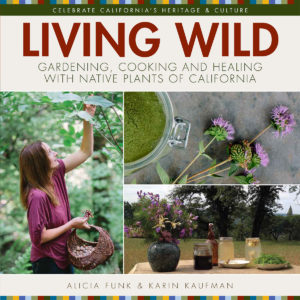It’s Nettle Time!
I grew up in Isleton, on the California Delta, spending a lot of time in the wilds of the local cornfields and the town’s edge lands. I knew many plants in a way that comes from the joy of a child, but there was one plant I avoided since even its name spelled doom: electric grass!
Electric grass is another common name for nettles, an erect 10” – 8’ plant with a gray-green, square stalk and stinging hairs. Nettles typically grow in moist and disturbed areas near rivers and streams and along ditches.
Today, I regularly go out to pick stinging nettles (Urtica dioica) and common nettles (U. urens) because I now know that nettles are packed with nutrition, a super-food containing high quantities of vitamin A, C and D, which is tasty, too!
Here in the Sacramento Valley, the best time to collect nettles is now, in the dead of winter. In other regions of Northern California, they are ready in early spring.
Pick nettles when they are young, before they flower, snipping the top 4-6″ of the plant. Wear full leather gloves, as the uric acid often gets through cloth and causes itching, swelling and burning almost immediately. When collecting, avoid conventional farms, urban areas and city parks that spray pesticides.
Nettle leaves and stems do not sting after juicing, drying or cooking. They are delicious steamed or boiled. Bring a pot of salted water to a rolling boil and use tongs to add the nettles. Cook nettles for about 15-30 seconds (a bit longer for stinging nettles), remove with tongs and shock the greens by placing them in a bowl of ice water. Squeeze out the water and enjoy as a side dish, mix with other vegetables or freeze for later use.
For health, nettle tea has been used to help nourish the body after illness and as a natural antihistamine in the treatment of allergies. Clinical studies have shown that nettles works as a diuretic, helping the body eliminate uric acid that can lead to kidney stones and urinary tract infections.
However you choose to enjoy nettles, it is an important ingredient in every wild forager’s diet.
4 comments on “It’s Nettle Time!”
Comments are closed.





Hi! I just moved to area from the East Coast and am looking for some nettle foraging tips. Do you know of any spots near Davis good for finding them? I haven’t run into them on any of my walks yet.
cheers,
Christie
looks like this might help against mold. More later tonight. Happy valentine.
I thought nettles were a different plant. Maybe these are the same plants, but a lot smaller. Thanks for the info.
Hilary,
You can tell nettles by the hairy stems that sting when you touch them. They range in height from a short 3″ to 8 feet, depending on the environment. In our area, they are just starting to come up and will emerge more as we get closer to spring.
-Alicia